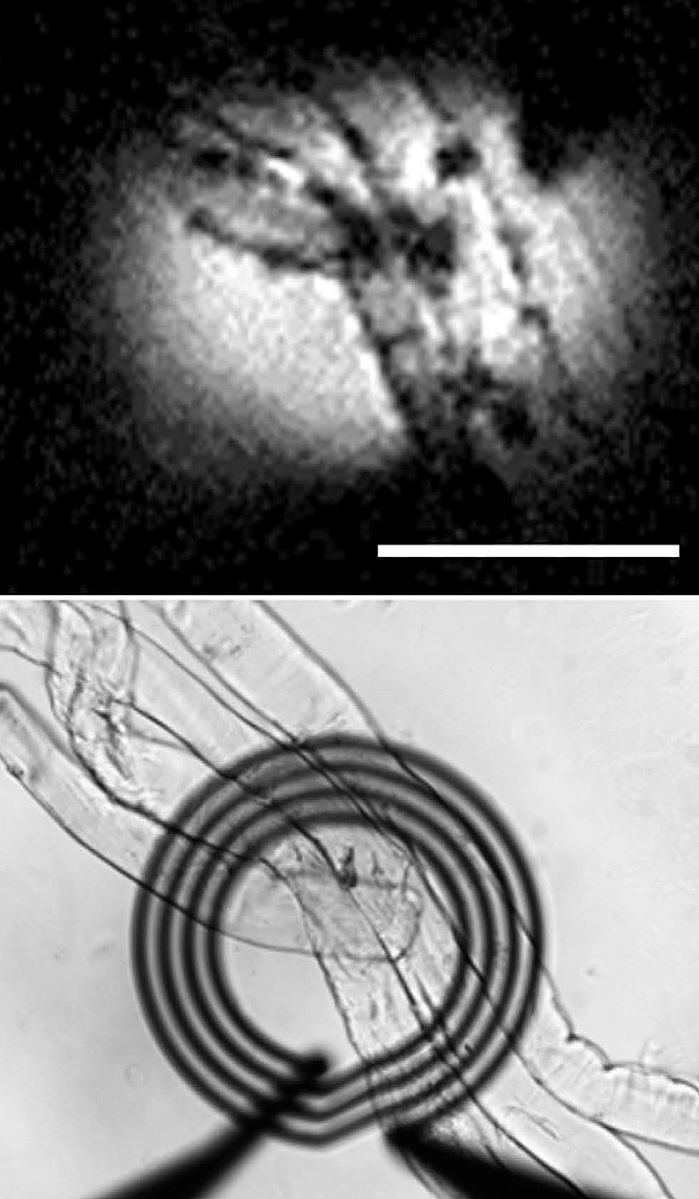 | ||
Magnetic resonance microscopy (MRM, µMRI) is magnetic resonance imaging (MRI) at a microscopic level down to the scale of microns. The first definition of MRM was MRI having voxel resolutions of better than 100 µm³.
Contents
Nomenclature
Magnetic resonance microscopy refers to very high resolution MRI imaging (down to nanometer scale, in some cases comparable with histopathology). The term MR microscopy is most widely used by the High Resolution Magnetic Resonance Imaging department at Duke University, headed by Dr. G. Allan Johnson, and the National High Magnetic Field Lab group at AMRIS, University of Florida/Florida State University.
Differences between MRI and MRM
Current status of MRM
Although MRI is very common for medical applications, MRM is still developing in laboratories up to resonance frequencies of 1000 MHz[1] (for nuclear magnetic resonance; electron magnetic resonance commonly operates at much higher frequencies). The major barriers for practical MRM include:
Alternative MRM
Magnetic resonance force microscopy (MRFM) has nm-scale resolution. It improves the sensitivity issue by introducing microfabricated cantilevers to measure tiny signals. The magnetic gradient is generated by a micrometre-scale magnetic tip, yielding a typical gradient 10 million times larger than those of clinical systems. This technique is still in the early phase of development. Because the specimen needs to be in a high vacuum at cryogenic temperatures, MRFM can be used only for solid state materials.
